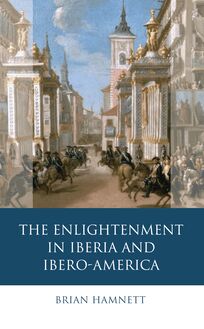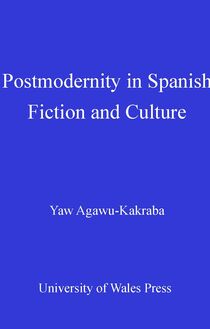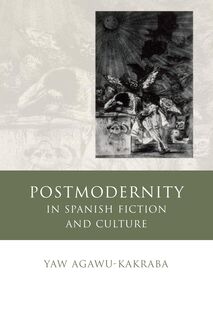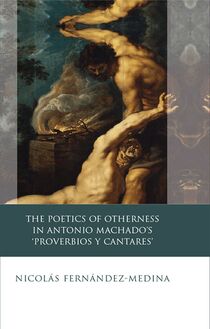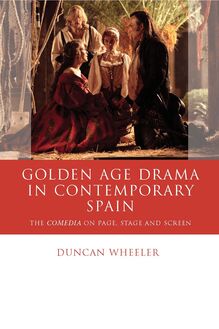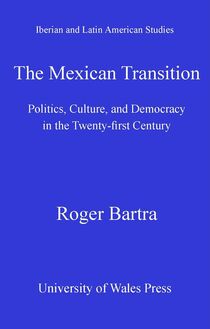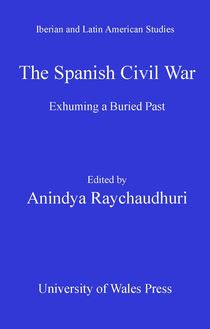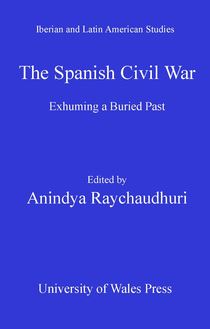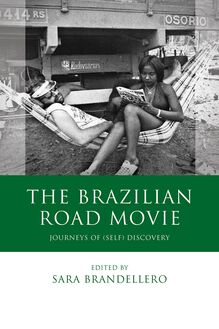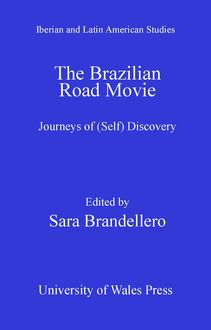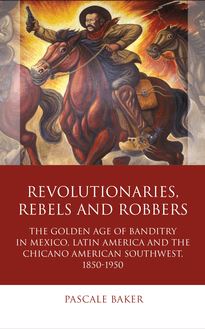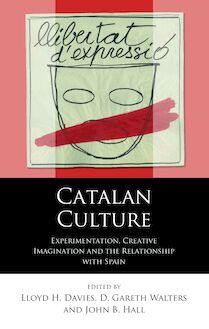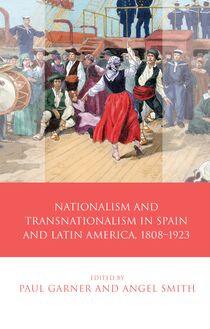-
 Univers
Univers
-
 Ebooks
Ebooks
-
 Livres audio
Livres audio
-
 Presse
Presse
-
 Podcasts
Podcasts
-
 BD
BD
-
 Documents
Documents
-
- Cours
- Révisions
- Ressources pédagogiques
- Sciences de l’éducation
- Manuels scolaires
- Langues
- Travaux de classe
- Annales de BEP
- Etudes supérieures
- Maternelle et primaire
- Fiches de lecture
- Orientation scolaire
- Méthodologie
- Corrigés de devoir
- Annales d’examens et concours
- Annales du bac
- Annales du brevet
- Rapports de stage
La lecture à portée de main
Vous pourrez modifier la taille du texte de cet ouvrage
Découvre YouScribe en t'inscrivant gratuitement
Je m'inscrisDécouvre YouScribe en t'inscrivant gratuitement
Je m'inscrisEn savoir plus
Vous pourrez modifier la taille du texte de cet ouvrage
En savoir plus

Description
Since its publication in 1929, the story of Doña Bárbara has haunted the collective Latin-American imagination, and has been adapted variously both for the small and big screen. Doña Bárbara Unleashed explores how Rómulo Gallegos’s original story has been kept alive yet altered by subsequent screen adaptations; the book illustrates how film and telenovela adaptations have reinterpreted Doña Bárbara in order to mirror changes in societal norms, such as the role of women in Latin American societies, and audience expectations. Particular attention is given to how spectators in the twenty-first century have played a crucial role influencing the alterations to which Gallegos’s original plot has been subjected. Now Doña Bárbara Unleashed offers an original way of studying screen adaptations by engaging several adaptations of the same source text in dialogue with each other, rather than simply comparing adaptations to the source text. This is a ground-breaking study that further develops readings through more traditional theories of screen adaptations with approaches emerging from fandom studies and audience responses.
Series Editors’ Foreword
Acknowledgements
List of Figures
Introduction: Doña Bárbara, Her Critics, Her Story and Her Fans
1 ‘The Legend of María Transformed into the Doña’ – Fernando de Fuentes’s Launching of a Legend on Screen (1943)
2 ‘From the Point of View of the Woman’ – Doña Bárbara as Seen by Betty Kaplan (1998)
3 Doña Bárbara Reborn – Entering the New Millennium on the Small Screen (2008)
4 Simply La Doña (2016)
Conclusion
Notes
Bibliography
Index
Sujets
Informations
| Publié par | University of Wales Press |
| Date de parution | 01 avril 2021 |
| Nombre de lectures | 0 |
| EAN13 | 9781786836885 |
| Langue | English |
Informations légales : prix de location à la page 0,1900€. Cette information est donnée uniquement à titre indicatif conformément à la législation en vigueur.
Extrait
IBERIAN AND LATIN AMERICAN STUDIES
Doña Bárbara Unleashed
Series Editors
Professor David George (Swansea University)
Professor Paul Garner (University of Leeds)
Editorial Board
Samuel Amago (University of Virginia)
Roger Bartra (Universidad Autónoma de México)
Paul Castro (University of Glasgow)
Richard Cleminson (University of Leeds)
Catherine Davies (University of London)
Luisa-Elena Delgado (University of Illinois)
Maria Delgado (Central School of Speech and Drama, London)
Will Fowler (University of St. Andrews)
David Gies (University of Virginia)
Gareth Walters (Swansea University)
Duncan Wheeler (University of Leeds)
Other titles in the series
Fantastic Short Stories by Women Authors from Spain and Latin America: A Critical Anthology
Patricia Gracía and Teresa López-Pellisa
Carmen Martín Gaite: Poetics, Visual Elements and Space
Ester Bautista Botello
The Spanish Anarchists of Northern Australia: Revolution in the Sugar Cane Fields
Robert Mason
Paulo Emilio Salles Gomes: On Brazil and Global Cinema
Maite Conde and Stephanie Dennison
The Tlatelolco Massacre, Mexico 1968, and the Emotional Triangle of Anger, Grief and Shame: Discourses of Truth(s)
Victoria Carpenter
The Darkening Nation: Race, Neoliberalism and Crisis in Argentina
Ignacio Aguiló
Catalan Culture: Experimentation, creative imagination and therelationship with Spain
Lloyd Hughes Davies, J. B. Hall and D. Gareth Walters
IBERIAN AND LATIN AMERICAN STUDIES
Doña Bárbara Unleashed
From Venezuelan Plains to International Screen
J ENNI M. LEHTINEN
© Jenni M. Lehtinen, 2021
All rights reserved. No part of this book may be reproduced in any material form (including photocopying or storing it in any medium by electronic means and whether or not transiently or incidentally to some other use of this publication) without the written permission of the copyright owner. Applications for the copyright owner’s written permission to reproduce any part of this publication should be addressed to the University of Wales Press, University of Wales Registry, King Edward VII Avenue, Cardiff CF10 3NS.
www.uwp.co.uk
British Library CIP
A catalogue record for this book is available from the British Library.
ISBN 978-1-78683-686-1
e-ISBN 978-1-78683-688-5
The right of Jenni M. Lehtinen to be identified as author of this work has been asserted in accordance with sections 77 and 79 of the Copyright, Designs and Patents Act 1988.
The publisher has no responsibility for the persistence or accuracy of URLs for any external or third-party internet websites referred to in this book, anddoes not guarantee that any content on such websites is, or will remain, accurate or appropriate.
Cover image: Cattallina/ Shutterstock.com
To Fosco, Marisela and Pavlusha
Contents
Series Editors’ Foreword
Acknowledgements
List of Figures
Introduction: Doña Bárbara, Her Critics, Her Story and Her Fans
1 ‘The Legend of María Transformed into the Doña’ – Fernando de Fuentes’s Launching of a Legend on Screen (1943)
2 ‘From the Point of View of the Woman’ – Doña Bárbara as Seen by Betty Kaplan (1998)
3 Doña Bárbara Reborn – Entering the New Millennium on the Small Screen (2008)
4 Simply La Doña (2016)
Conclusion
Notes
Bibliography
Series Editors’ Foreword
Over recent decades the traditional ‘languages and literatures’ model in Spanish departments in universities in the United Kingdom has been superseded by a contextual, interdisciplinary and ‘area studies’ approach to the study of the culture, history, society and politics of the Hispanic and Lusophone worlds – categories that extend far beyond the confines of the Iberian Peninsula, not only in Latin America but also to Spanish-speaking and Lusophone Africa.
In response to these dynamic trends in research priorities and curriculum development, this series is designed to present both disciplinary and interdisciplinary research within the general field of Iberian and Latin American Studies, particularly studies that explore all aspects of Cultural Production (inter alia literature, film, music, dance, sport) in Spanish, Portuguese, Basque, Catalan, Galician and indigenous languages of Latin America. The series also aims to publish research in the History and Politics of the Hispanic and Lusophone worlds, at the level of both the region and the nation-state, as well as on Cultural Studies that explore the shifting terrains of gender, sexual, racial and postcolonial identities in those same regions.
Acknowledgements
I first came across the idea of writing a book on screen adaptations of Doña Bárbara years ago when finishing my doctoral studies at Oxford University. The potential value of such a project was initially brought to my attention by Edwin Williamson and Clive Griffin. Years after graduating, I remain grateful to Oxford’s Spanish Sub-faculty, and above all to Robin Fiddian, for providing me with such an excellent foundation in academia.
Since exchanging the ‘dreaming spires’ of Oxford for the steppes of Northern Kazakhstan, I have been equally lucky in terms of receiving support from a wider academic community. The Department of Languages, Linguistics and Literatures at Nazarbayev University has provided a collegial working environment that has helped greatly my research and writing endeavours at all times. I would like to thank Nazarbayev University in particular for awarding me a generous grant for funding my research trips to Mexico and Trinidad and Tobago, without which this project would not have been possible. I am once again especially grateful to Lancelot Cowie for hosting me at the University of West Indies, where I carried out much of my research on secondary literature. A further, very special expression of gratitude goes to Raúl Miranda López, José Alberto Rodríguez, David Israel Ramírez and David Ornelas at the Cineteca Nacional de Mexico, who not only provided invaluable assistance in facilitating my access to the necessary research materials during my trips to Mexico City, but further offered continued assistance from the other side of the globe. I would also like to thank Inger-Lise Kalviknes Bore, John Mercer and Paul Long at Birmingham City University for introducing me to the fascinating world of fandom and media studies, a world that helped me to shape my research on the twenty-first-century telenovelas based on the story of Doña Bárbara.
A handful of colleagues have also left very specific marks in the actual manuscript. My long-term friend and colleague Tyler Fisher provided constructive feedback on my project at various points and helped me to formulate attractive titles. David Hammerbeck helped me perceive the theatricality of the 1943 film adaptation, whilst María Donapetry drew my attention to the fact that the character of Doña Bárbara can be interpreted as an archetype of the Venezuelan nation. Stein Trotman and Kris Harthoorn provided me with some indispensable help with formatting issues. Karie Pieczynski meticulously proofread my final draft, and Roza Zhakhina contributed to editing the images included in this book.
Also, my parents, Maijaliisa Lehtinen and Harri Lehtinen deserve a special, heartfelt mention for their continued, untiring support. I would like to further express my gratitude for the excellent and consistent research assistance provided by Fosco and Marisela at home. The Tulpar Equestrian Club community has kept me sane throughout the many years of research and writing, and I would like to extend my gratefulness to my trainer Valera Starodubov and Pavlusha, my own Cabos Negros, both of whom have taught me to be a bit more like Doña Bárbara.
Jenni M. Lehtinen 17 May 2020
List of Figures
Figure 1 María Félix’s Doña Bárbara and María Elena Marqués’s Marisela recognize themselves in each other during a violent altercation.
Figure 2 Esther Goris’s Doña Bárbara bares her body and soul to Jorge Perugorría’s Santos only in order to be rejected.
Figure 3 The twenty-first-century Doña Bárbara (Edith González) and Santos’s (Christian Meir) passionate love story unravels against the backdrop of an undefined Latin American landscape.
Figure 4 Altagracia Sandoval (Aracely Arámbula) admires her urban empire from the rooftop of one of her construction sites in the opening scene of La Doña .
Introduction
Doña Bárbara, Her Critics, Her Story and Her Fans
Tocante a amores, ya ni siquiera [ sic ] aquella mezcla salvaje de apetitos y odio de la devoradora de hombres. Inhibida la sensualidad por la pasión de la codicia y atrofiadas hasta las últimas fibras femeniles de su ser por los hábitos del marimacho – que dirigía personalmente las peonadas, manejaba el lazo y derribaba un toro en plena sabana como el más hábil de sus vaqueros y no se quitaba de la cintura la lanza y el revólver, ni los cargaba por encima sólo para intimidar – si por alguna razón de pura conveniencia … la movía a prodigar caricias, más era hombruno tomar que femenino entregarse. Un profundo desdén por el hombre había reemplazado al rencor implacable.
No obstante este género de vida y el haber traspuesto ya los cuarenta, era todavía una mujer apetecible, pues si carecía en absoluto de delicadezas femeniles, en cambio el imponente aspecto del marimacho le imprimía un sello original a su hermosura: algo de salvaje, bello y terrible a la vez. 1
Rómulo Gallegos, Doña Bárbara (1929)
In the matter of love, the ogress was no longer the wild mixture of lust and hatred. Her appetites were strangled by her greed, and the last fibres of her femininity in her being were atrophied by the habits of the virago – she personally directed the labour of the peons, tossed the lasso, and could bring down a bull out in the open as well as her most skillful cowboy. She was never without her lance-head dagger and her revolver, nor did she carry them in her belt for mere threat. If reasons of pure expediency … moved her to be generous with her caresses, she was so more as a man wh
-
 Univers
Univers
-
 Ebooks
Ebooks
-
 Livres audio
Livres audio
-
 Presse
Presse
-
 Podcasts
Podcasts
-
 BD
BD
-
 Documents
Documents
-
Jeunesse
-
Littérature
-
Ressources professionnelles
-
Santé et bien-être
-
Savoirs
-
Education
-
Loisirs et hobbies
-
Art, musique et cinéma
-
Actualité et débat de société
-
Jeunesse
-
Littérature
-
Ressources professionnelles
-
Santé et bien-être
-
Savoirs
-
Education
-
Loisirs et hobbies
-
Art, musique et cinéma
-
Actualité et débat de société
-
Actualités
-
Lifestyle
-
Presse jeunesse
-
Presse professionnelle
-
Pratique
-
Presse sportive
-
Presse internationale
-
Culture & Médias
-
Action et Aventures
-
Science-fiction et Fantasy
-
Société
-
Jeunesse
-
Littérature
-
Ressources professionnelles
-
Santé et bien-être
-
Savoirs
-
Education
-
Loisirs et hobbies
-
Art, musique et cinéma
-
Actualité et débat de société
- Cours
- Révisions
- Ressources pédagogiques
- Sciences de l’éducation
- Manuels scolaires
- Langues
- Travaux de classe
- Annales de BEP
- Etudes supérieures
- Maternelle et primaire
- Fiches de lecture
- Orientation scolaire
- Méthodologie
- Corrigés de devoir
- Annales d’examens et concours
- Annales du bac
- Annales du brevet
- Rapports de stage
